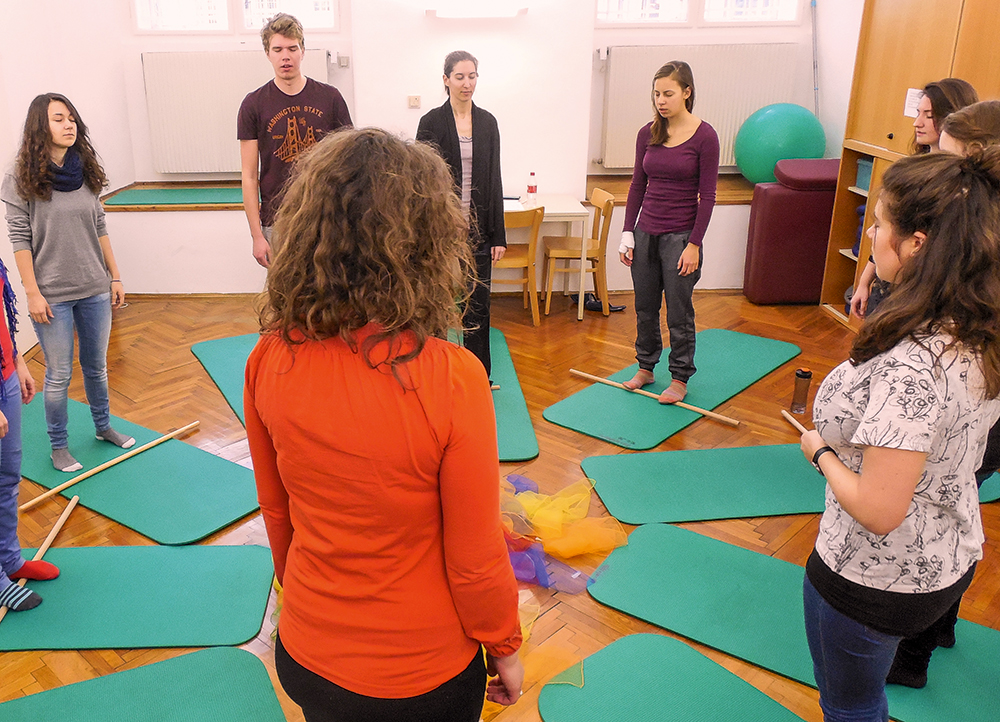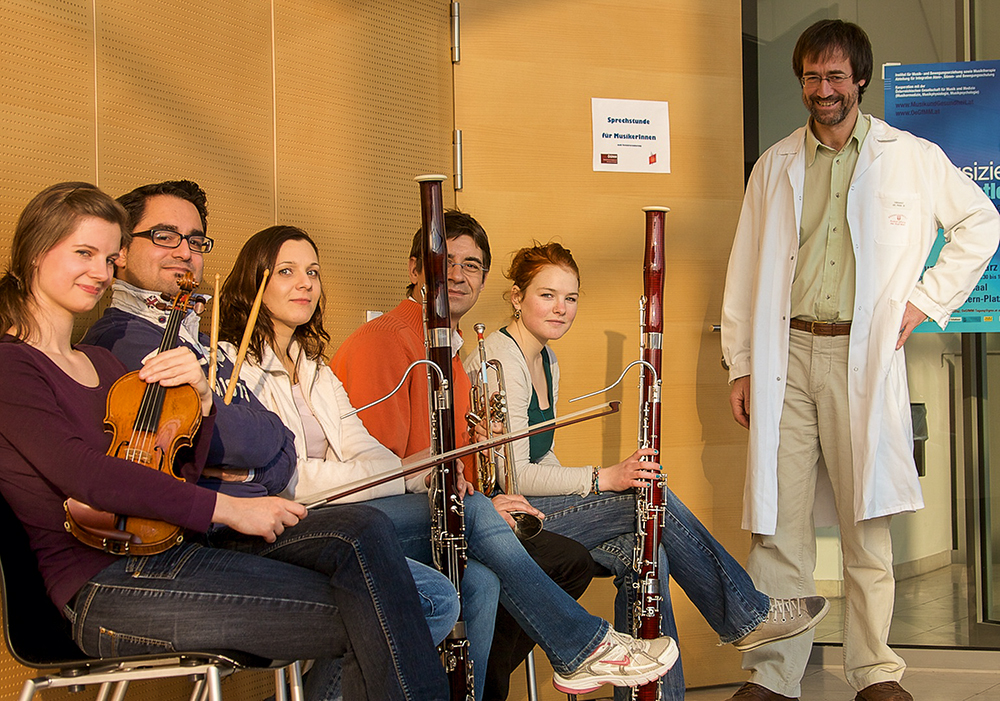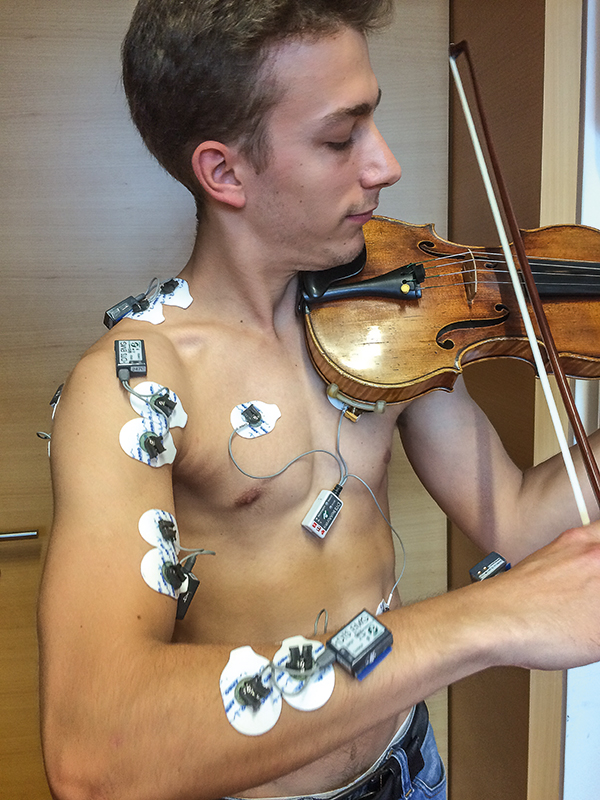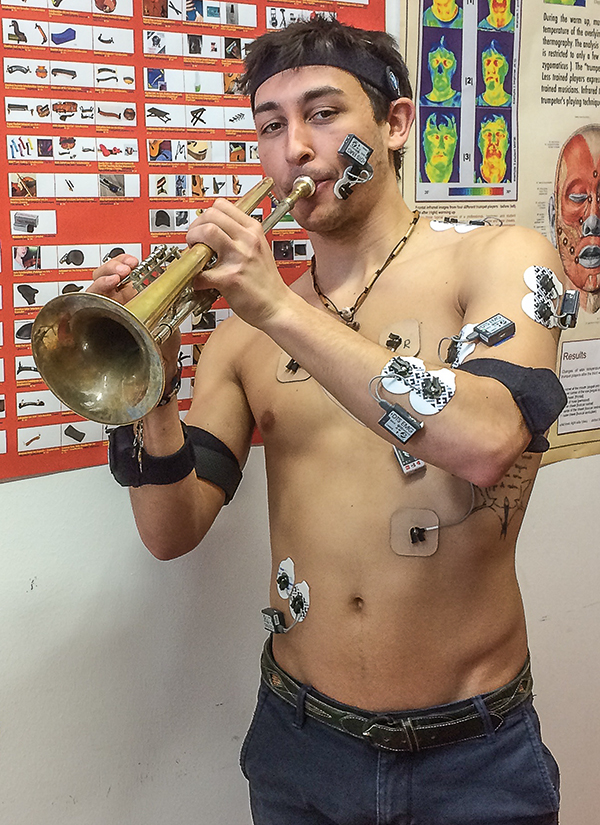Music’s Effects on the Body and the Emotions

What gets touched off inside us when we hear sounds in the bass register—or, more to the point, when we feel them? Impressions of power, strength, and respect, but also security and trust—all these things can be conveyed via bass parts and low notes. When playing their own instruments, all musicians perceive low notes not only via their sense of hearing, but also via tactile stimuli—in other words “by feel”, since our bodies are equipped with nerves capable of picking up the vibrations that low notes produce. Particularly sensitive areas of our bodies are our lips, our fingertips, our hands, and the soles of our feet, which is why we feel sequences of low notes best in those places. This is also why some musicians with impaired hearing are fond of playing barefoot.

Viewed from a physics standpoint, low frequencies—i.e., long sound waves—are produced by longer, thicker strings or longer reeds, which allow the waves to spread out the farthest. This is why we can hear double basses, organ pipes, or large loudspeakers quite well over long distances. And the lower an instrument’s sound, the bigger it is, too.

From a music-psychological standpoint, low notes and parts give rise to a feeling of security and strength insofar as they are played in a calm rhythm. Volume and rhythm can decide whether low notes are perceived as threatening and frightening or as soothing. It is above all film music that makes use of these mechanisms in order to portray a spectrum of emotions ranging from harmony to fear. In opera, the power of a ruler can be conveyed most effectively to the audience by low notes and deep voices. And in the non-musical world, as well, low sounds have their effect: a speech by a politician delivered at a measured pace and in a deep register is better suited to conveying trust than one delivered in a high register and at a rushed pace. Unborn children in their mothers’ wombs hear low frequencies quite well, while higher ones can’t get through to them. We also associate a more intense physical experience with the droning of basses and the attendant vibrations, as can easily be demonstrated by visiting a music festival or club. It’s due to these palpable vibrations, incidentally, that people who are unable to hear can still sense low notes just as well as those with intact hearing.
One individual who deals with musicians’ bodily perceptions when playing their instruments is Matthias Bertsch of the Music Physiology programme at the mdw’s Department of Music and Movement Education/Rhythmics and Music Physiology. Musicians’ health stands at the centre of this programme’s activities, owed to the fact that a great number of music students and professional musicians will have to deal with serious health problems over the course of their careers due to their daily musicmaking activities. Tightness in heavily used muscle groups in the throat, neck, shoulders, and—with some instruments—arms, as well as problems with the lips, are everyday phenomena for many musicians. People seldom speak about these things publicly, however, particularly when physical problems are joined by psychological difficulties and stage fright. In order to help prevent such complaints and their causes, the music physiology programme offers courses in which future professional musicians can school their perception of their own bodies. To this end, music students are observed again and again while playing their instruments in order to correct sitting positions and postures that may be causing strain. “What’s important is to train one’s own self-perception and to realise that we’re capable of influencing our own bodies,” says Bertsch, whose work at the mdw and as president of the Austrian Society for Music and Medicine deals with musicians’ health in an intense and direct way.

With the help of measurement equipment that records things like one’s pulse, breathing patterns, or muscle tension, musicians are shown what goes on in their bodies as they play. This makes clear to them how tension can be reduced through measures such as the adoption of a new position. Particularly beginners tend to tense muscles that aren’t necessarily needed for playing, straining them as they do so. One way of ascertaining this is with thermal imaging cameras. A new measuring device that Matthias Bertsch is currently developing together with ETH Zurich measures the pressure applied to the mouthpiece when playing the trumpet. If the mouthpiece is pressed too tightly to the lips (which happens especially with beginners and with brass players who suffer from muscle fatigue), the lips’ blood supply is reduced. So the new piece of measuring equipment is intended to show players how much pressure is necessary without overtaxing the lips.
According to Matthias Bertsch, playing instruments “correctly” in the sense of preserving musicians’ health needs to become a topic early on, at the music school level. This is why he brought to life the mdw’s Certificate in Advanced Studies in Music Physiology, which addresses individuals including teachers at institutions of music education in order to help them strengthen awareness of musicians’ health issues among young musicians. “Much of music physiology is comparable with sports medicine. Like athletes, musicians have to deliver top performance every evening they perform,” says Bertsch of music physiology and music medicine’s importance.

